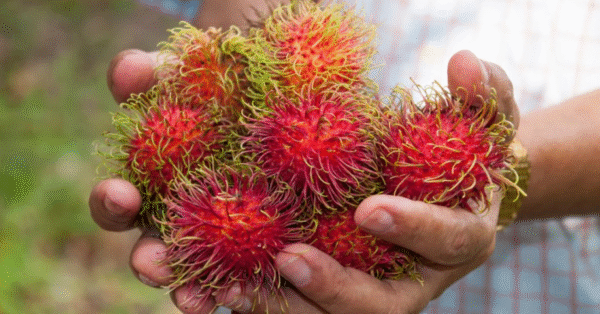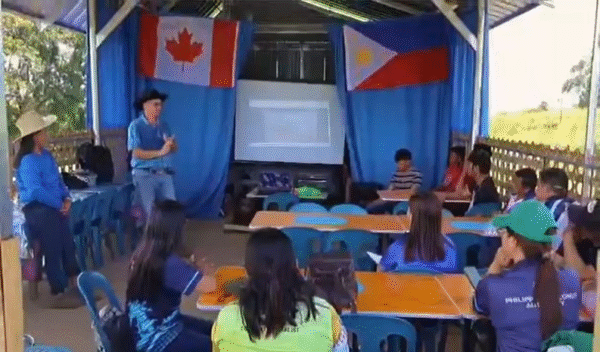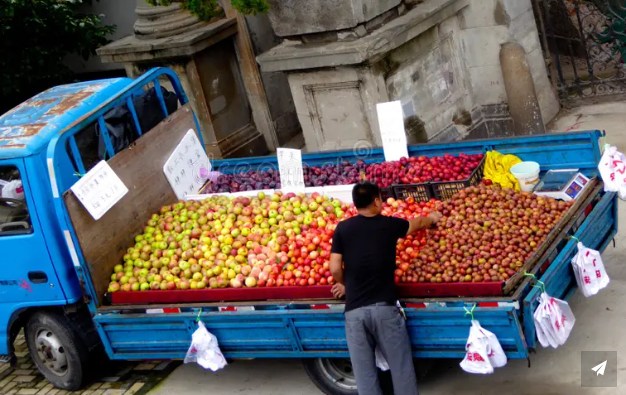Phase 3: New Value Trees Integration and Maintenance
Overview of the Value Fruit Trees
Phase 3 of Jessie’s Sunshine Farm marks a pivotal stage. It is the transition from establishment to long-term sustainability and diversification. With put the foundations, infrastructure, and digital systems firmly in place from earlier phases. This phase focuses on the planting of high-value trees, enhancement of farm equipment and logistics, completion of critical facilities, and expansion into digital commerce and branding.
The farm now is evolving from a planted and structured estate into a dynamic agricultural enterprise. It is integrating production planning, modern farm machinery, and an expanding vision for education and e-commerce. Every addition, from new value trees varieties to the west cliff cottage, strengthens the farm’s purpose as both a productive, sustainable ecosystem and a model of innovation in Agri-living.
Phase 3: Value Trees Integration
1. Value Tree Integration and Multi-Canopy Planting
The central focus of Phase 3 is the planting of high-value fruit and specialty trees. The project is organizing them in a multi-canopy layer design. That is to maximize land productivity, soil health, and biodiversity. This stage builds on the coconut framework established in Phase 2, hence, introducing a carefully curated mix of tropical and exotic fruit-bearing trees. As a result, this will shape the farm’s future harvests.
Pomelo Fruit Tree – Value Trees

First Canopy: The Main Crop — Essential Income Base
At the top layer, the first canopy features the Catigan, Tacunan, and hybrid coconut varieties.
Catigan coconuts, known for their resilience and high oil yield, were selected for their ability to thrive in varying soil, climate conditions, and on mostly slopes.
Tacunan coconuts known for its early bearing, high-yielding, and sweet-tasting characteristics. It produces aromatic coconut water and thick, flavorful meat ideal for both fresh consumption and processing. It has resilience, compact height, and consistent productivity, making it a practical and profitable choice .
Hybrid coconuts, bred for early fruiting and consistent productivity, complement the Catigan line by ensuring a steady flow of harvests in the coming years.
Consequently, these trees serve as the economic backbone of the farm, forming a structured overstory that defines the plantation’s rhythm and grid alignment.
Second Canopy — Specialty and Value Fruit Trees
The second layer will not outgrow the first canopy, despite it is inline with the Coconut Rows.
After all, the second canopy layer brings diversity and long-term value through an impressive lineup of fruit trees planted in line with the coconut rows. Major labor effort will be to prune the fruit trees in height to a restriction of 3 meters, and a width restrictions with a radius of 2.5 meters. Each species contributes to both ecological diversity and market potential:
Durian, Lanzones, Mangosteen, and Rambutan — representing high-value tropical delicacies prized for their flavor and export demand.
Pomelo, American Lemon, and American Lime — citrus varieties providing strong aromatic yields and natural pest-repelling benefits.
Guavapple, Tabon Tabon, Sweet Guavabo, and Purple Mango — unique regional and hybrid fruits positioned for niche markets and future processing products.
Indian Mango, Bangkok Suntal, and Cebu Mango — varieties celebrated for their sweetness and cultural appeal, aligning with the farm’s identity as a heritage grower.
This layer enhances biodiversity and introduces multiple streams of revenue, ensuring staggered fruiting cycles and long-term resilience.
Third Canopy — Mid-Level Crops for Continuous Production
Filling the spaces between the coconut rows, the third canopy serves as a continuous production layer of smaller, fast-yielding crops:
Calamansi and variegated calamansi, key for both culinary and processed juice markets.
Cacao and coffee, foundational cash crops introducing agro-industrial potential for value-added products such as tablea, roasted beans, and chocolate blends.
Bananas and papayas, reliable short-term income sources providing shade, organic mulch, and quick harvest turnover.
Together, these crops establish a dynamic agroforestry system, supporting nutrient cycling, pest control, and microclimate regulation while ensuring year-round yield potential.

Fourth Canopy — Root and Spice Crops for Added Value
Beneath the shade and protection of the upper canopies lies the fourth layer. An intelligent integration of root and spice crops that maximize soil health and farm income. This layer is dedicated to resilient, high-demand crops such as Turmeric, Ginger, Thai chili, and Bell Pepper, each playing a vital role in both culinary and medicinal markets.
Turmeric and ginger thrive in the filtered light provided by the taller trees, enriching the soil with organic matter while producing valuable rhizomes known for their anti-inflammatory and antioxidant properties. These crops represent an expanding market in natural health and wellness, making them perfect for Jessie’s Sunshine Farm’s long-term sustainability goals.
Meanwhile, Thai chili and bell pepper add both color and spice to the farm’s production system. Thai chili offers a consistent source of income due to its strong demand in local and regional markets, while bell pepper provides versatility for fresh market sales and food processing. Their presence enhance pest management, as the aromatic nature of these plants naturally deters certain insects.
Together, these root and spice crops form a productive ground-level layer that complements the upper canopies. They embody Jessie’s Sunshine Farm’s commitment to integrated, sustainable, and value-driven agriculture, ensuring that every layer of the land contributes meaningfully to the farm’s ecological balance and economic resilience.
Maintenance and Mechanization
2. Tree Maintenance and Crop Management Systems
With hundreds of new trees taking root, maintenance routines were formally established and scheduled. This includes:
Weeding and mulching programs, coordinated by sector, crop, or canopy layer.
Pest and disease control protocols, incorporating organic and biological treatments to minimize chemical use.
Pruning and thinning schedules, ensuring proper light penetration and airflow.
Routine soil enrichment, using compost and chicken manure from the farm’s poultry and later goat area.
Simultaneously, harvest preparation routines were introduced, though fruiting is expected within 3–5 years. These routines focus on establishing familiarity with tree care cycles, record-keeping, learning procedures, standard operating procedures, and early fruit set observation. Each activity feeds into the farm’s digital management platform, creating a reliable data record for productivity tracking.
3. Capital, Equipment, and Mechanization
Recognizing the need for efficiency and scalability, Phase 3 prioritized mechanization and capital investment. Two major acquisitions are to be made:
A new excavator, critical for land shaping, pond excavation, drainage maintenance, and major landscaping work.
A 5-ton truck with a 10-foot bed, providing transportation for seedlings, harvested produce, and building materials.
These assets greatly will improve operational independence, reducing reliance on rented machinery, manual labor, and external logistics. The investment in mechanization also signifies the farm’s maturity: moving toward self-reliant and efficient production systems.
4. Workshop Construction and Tool Management
A major infrastructural milestone in Phase 3 will be the establishment of the workshop, complete with electrical hookups and a generator set (genset).
This workshop serves as the central hub for:
Maintenance and repair of farm tools, machinery, and vehicles.
Storage and organization of equipment, which previously occupied the Function Hall.
Technical learning and seminars, where workers can undergo hands-on training in machinery operation, carpentry, and repair work.
The relocation of tools and machinery to the workshop also will restore the Function Hall to its intended purpose: as a venue for meetings, farm tours, and agricultural education events.
5. Administrative and Residential Expansion
Administration Building Completion
The administration building will be finalized during this phase, completing the operational triangle of management, logistics, and workforce .
With a permanent office to be established, farm operations gained improved coordination, secure documentation storage, and better facilities for planning, accounting, administration, and deliveries.
Cottage Construction
One new private cottages is to be built:
One on the West Cliff, offering panoramic views and functioning as a rest and observation point for guests was already finished.
Another beside the White Lady Mango Tree, blending natural beauty with symbolic connection to the farm’s history and local folklore.
These cottages also support the farm’s growing eco-tourism and lodging potential, preparing Jessie’s Sunshine Farm for future guest programs and immersive farm experiences.

6. E-Commerce and Market Development
As the farm’s physical landscape matures, so does its digital presence. The e-commerce website will be enhanced and fully furnished to handle:
– Online product sales, including
– fresh produce,
– seedlings, and
– artisanal goods.
– Booking and reservations of farm facilities, and
– accommodations.
Marketing outreach, featuring social media integration, newsletters, and customer management tools will increase our presents, branding, and history.
The farm began identifying target markets, from local organic stores to export distributors. Consequently, aligning the projected timelines for fruit harvests with markets or counter markets. This strategic move ensures that when production is matured and established, sales channels and brand recognition are already established.
7. Conclusion: The Growth of a Living Enterprise
Phase 3 represents the maturation of Jessie’s Sunshine Farm. A living enterprise that now integrates ecology, machinery, education, and digital innovation.
The planting of multi-canopy value trees sets the farm’s biological future, while the addition of machinery, buildings, and online systems secures its operational and commercial foundation. The blend of traditional farming wisdom and modern management technology positions Jessie’s Sunshine Farm as a model of regenerative agriculture and rural entrepreneurship.
From soil to software, from coconuts to cacao, the farm now thrives as both a productive landscape and a beacon of sustainable growth. It is a continuing journey under the sunshine, where every seed planted carries the promise of abundance to honor the Goodness of the Lord Jesus Christ, God Will.